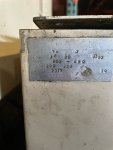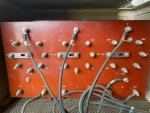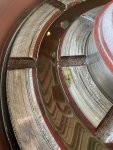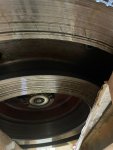Spruewell
Well-known member
- Joined
- Mar 6, 2021
- Messages
- 669
- Reaction score
- 437
Found out she’s wired for 480V. I only have 220 in my shop. Looks like I’ll have to go in and re-wire each motor as well as the rectifier for the mag chuck. I’ve been going through the manual I have for it, and haven’t been able to find information on the electrical panel that would tell me if there is anything in there that needs to be changed for 220. Anybody out there have any experience with this? It all appears to be original equipment in there with massive contactors, cloth insulated wires and everything.







